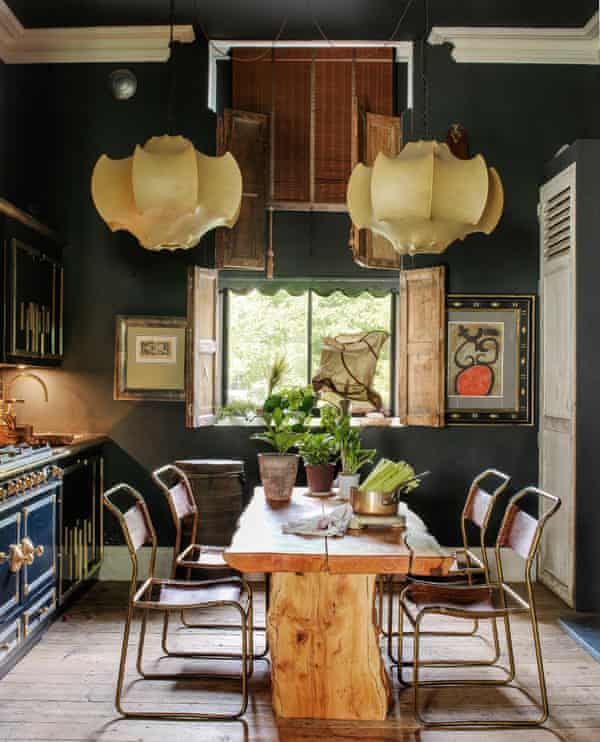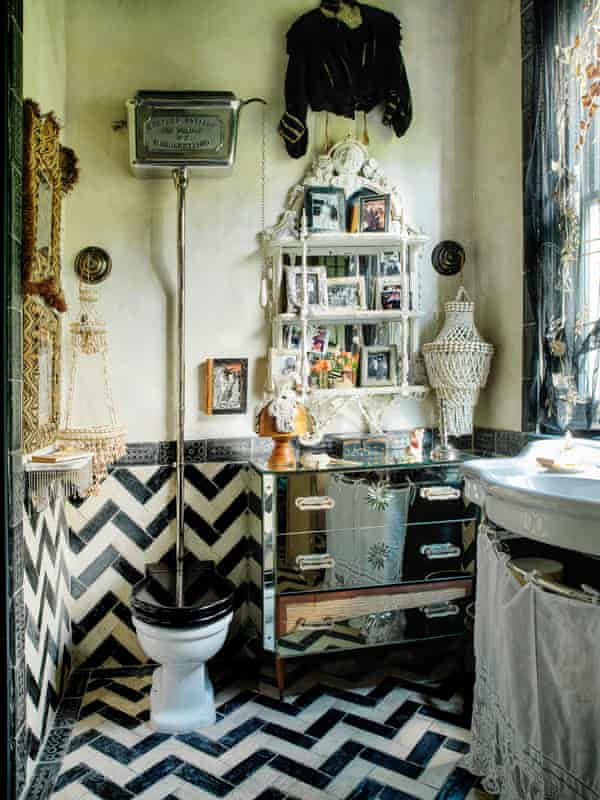
As a teenager, Sera Hersham-Loftus expressed herself in two distinct ways. The first was in her clothes: Victorian camisoles mixed with spooky eyeliner for a Siouxsie Sioux meets Tess of the D’Urbervilles effect (this was the 1980s). Decorating was the other. “I was always painting my bedroom walls and moving the furniture around. I’d borrow my mother’s scarves and drape them over lampshades for a romantic effect.” All this was an escape from “the strict, depressing formality” of her all-girls’ school.
School was not for her – “I was the class joker; always answering back” – so she left at 15, relieved to be able to “earn my own money and feel independent”. Determination, combined with chutzpah, landed her a job at Sadler’s Wells in the set-design department. Despite no formal training, she discovered she had a knack for bringing spaces to life with paint, fabric and resourcefulness. When friends began to ask her to do up their houses “it was as if I was predestined to become an interior designer,” she says.
Since then she has always used her own homes as a test bed for decorating ideas. And this apartment that she bought in 2015 in Little Venice, London – set across two stucco-fronted townhouses – is a case in point. Its developer had “ripped the heart and soul” out of the Victorian building. Mouldings and fireplaces were all gone; the stair rail replaced by “a horrible twirling plastic thing”. But that suited Hersham-Loftus, whose look – bohemian and boudoir-ish with a rock’n’roll edge – is distinctly hers. “I couldn’t live with someone else’s taste. I’m a purist about what I do. I like to start from scratch and create my own, made-up worlds.”
Her apartment has been through several redesigns. She created wallpapers and commissioned the handmade tiles in the dressing area, where wardrobes are made from old French shutters. At first the walls were painted a “pale mushroom… like the backdrop for a John Galliano fashion shoot”. At one point she brought the terrace plants inside so that “everything felt dark and mysterious, like an urban jungle”.
While working on a townhouse in Amsterdam, she spotted that the builders were ripping out the interior of the house next door. She rushed outside and struck a deal to buy the decorative panelling and the long, wide Baltic pine flooring. It has now been restored and fitted in her sitting room, part of a trio of grand but convivial reception rooms which Hersham-Loftus likes to call – with irony – her “salons”.

For its latest incarnation, she asked longstanding colleague, the decorative-effects specialist Andrea Bizzarro, to give the interior “the feel of a Venetian palazzo that hadn’t been touched for 90 years”. Faded macaroon hues mixed specially sit well with the salvaged French fireplaces and the Victorian armchairs, stripped back to reveal their horsehair innards for “theatrical” effect. “I always buy unserious antiques; they have soul, but you don’t need to worry about damaging them.”
Certain aspects of the Hersham-Loftus look never change. “I don’t like overhead lighting. I like my spaces to feel mysterious – and transportative. And I always use natural materials, like linen or stone. I’m a fan of low seating and I don’t have doors, apart for the bedrooms; you don’t really need them, and they get in the way.” Black ceilings are another trademark. “You’d think it would feel oppressive, but it’s not, they help to ground a room and its contents.”

She has always been drawn to upcycling, turning humdrum objects into something magical. She persuaded the owner of a smart London restaurant to give her the mollusc shells which now decorate the fire surround in the kitchen. She has turned antique shoe lasts into lampstands, festooned with glinting glass droplets. Her latest creation is curtains made from scraps of antique lace – draped across windows and openings they diffuse the light like silky cobwebs for a modern Miss Havisham effect.
Her Instagram fans love them. “There’s a real revival in antiques and the handmade, especially among younger buyers,” says Hersham-Loftus who’s currently working on an apartment for Charlotte Watts, granddaughter of the late Rolling Stone Charlie. “For them all this feels new and different. I also think it’s a reaction to the digital age. People crave something cosy and tactile – a place to escape to.”
She’s bringing a similar effect to the “wellness retreat” she is currently designing for Charlotte Church. Set in Laura Ashley’s sprawling former home in Wales, the singer’s brief was “for a mystical, ‘witch’s apothecary’ setting, full of antiques, old panelling and muted light.” A kindred spirit then? “We gel. I’m fortunate that the people I work for buy into my vibe, my style.”
“It’s like my home, you know,” she concludes, sinking into a pile of peachy silk cushions. “I can’t imagine living somewhere that didn’t express me and my ideas. This is my world.”
For information, go to seraoflondon.com; instagram.com/seraoflondon



